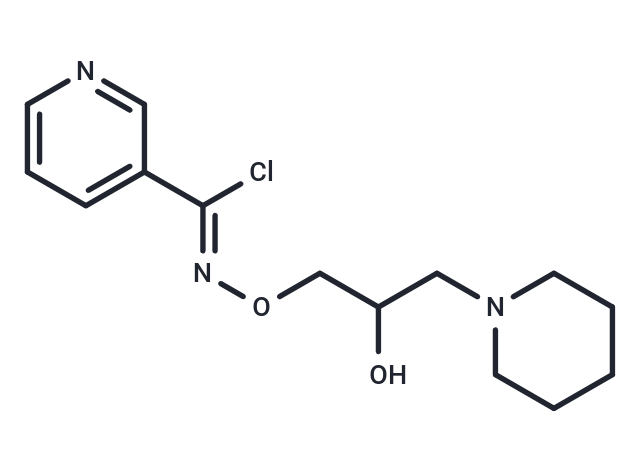Shopping Cart
- Remove All
 Your shopping cart is currently empty
Your shopping cart is currently empty

Bimoclomol is a heat shock protein co-inducer employed in cardiovascular disease research.

| Pack Size | Price | Availability | Quantity |
|---|---|---|---|
| 25 mg | $1,520 | 6-8 weeks | |
| 50 mg | $1,980 | 6-8 weeks | |
| 100 mg | $2,500 | 6-8 weeks |
| Description | Bimoclomol is a heat shock protein co-inducer employed in cardiovascular disease research. |
| In vitro | Under ischemic conditions, bimoclomol substantially boosts left ventricular developed pressure (LVDP) and cardiac output (CO), while reducing left ventricular end-diastolic pressure (LVEDP). At a concentration of 40 μM, it markedly enhances coronary flow (CF) during normoxic perfusion before ischemia and exhibits a biphasic impact on the relaxation rate. Concentrations of bimoclomol above 10 μM induce a concentration-dependent vasorelaxation (EC50: 214 μM), including against 20 mM KCl. However, it does not relax preparations precontracted with serotonin, PGF2α, or angiotensin II. Bimoclomol does not alter the stability or mRNA levels of Hsp70, but co-induces Hsp expression through sustained activation of heat shock factor-1 (HSF-1), a process ineffective in cells from HSF-1 deficient mice. It also engages directly with HSF-1, facilitating its prolonged association with DNA elements. Additionally, bimoclomol concentrations ranging from 0.1 to 10 μM improve the survival of rat neonatal cardiomyocytes and significantly raise HSP70 levels depending on exposure duration. A 24-hour pretreatment with bimoclomol notably enhances cell survival. |
| In vivo | In anesthetized dogs, Bimoclomol (1 and 5 mg/kg) decreases the ST-segment elevation induced by coronary occlusion by 56% and 80%, respectively [1]. |
| Molecular Weight | 297.78 |
| Formula | C14H20ClN3O2 |
| Cas No. | 130493-03-7 |
| Relative Density. | 1.27g/cm3 |
| Storage | Powder: -20°C for 3 years | In solvent: -80°C for 1 year | Shipping with blue ice. |

Copyright © 2015-2025 TargetMol Chemicals Inc. All Rights Reserved.